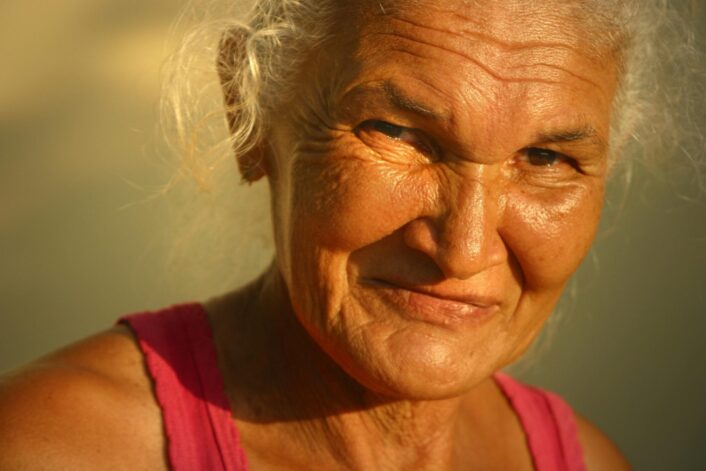
Ever looked in the mirror and noticed your eyelids drooping more than they used to? Eyelid sagging, also known as dermatochalasis, is a common condition that affects the appearance and function of the eyes.
Eyelid sagging occurs when the muscles responsible for lifting the eyelids weaken or the skin loses its elasticity. This can lead to a tired or aged appearance and, in severe cases, can impair vision. Various factors contribute to eyelid sagging, including aging, which is the most prevalent cause.
While eyelid sagging is often associated with older adults, it can affect people of all ages, including children. Understanding the underlying causes and potential treatments is essential for managing and mitigating the impact of eyelid sagging on both appearance and eye health.

Age-related eyelid sagging or drooping, in the form of dermatochalasis or ptosis, are common conditions that occur as part of the natural aging process. As people age, the skin and muscles around the eyes undergo changes that lead to the drooping of the upper eyelids. The primary factors contributing to this condition include the weakening of the levator muscles, which are responsible for lifting the eyelids, and the loss of skin elasticity due to decreased collagen production.
The skin around the eyes is particularly delicate and thin, making it more susceptible to the effects of aging. Over time, the connective tissues that support the eyelids can stretch and weaken, causing the eyelids to droop. This can give the face a tired or aged appearance and, in more severe cases, can obstruct vision.
Genetics plays a significant role in age-related eyelid sagging. If your parents or close relatives experienced ptosis, you are more likely to develop it as well. Additionally, lifestyle factors such as prolonged sun exposure, smoking, and poor skincare can accelerate the aging process and exacerbate eyelid sagging. For example, UV radiation from the sun can break down collagen and elastin fibers in the skin, hastening its loss of firmness and elasticity. Understanding the interplay between genetics and lifestyle can empower individuals to take proactive steps in managing age-related eyelid sagging.
Eyelid sagging can stem from a variety of causes. Understanding these causes helps individuals grasp how genetics, lifestyle, and health conditions can impact their appearance and eye health.
Understanding these causes highlights the multifaceted nature of eyelid sagging. Genetics, health conditions, and lifestyle choices all interplay to influence whether someone might develop ptosis. Awareness of these factors can help individuals take proactive steps in managing their eye health and appearance.
To uncover genetic risk factors for eyelid sagging, a 2018 genome-wide association (GWAS) study was conducted with 502 unrelated Caucasian women from the Paris region, aged between 44 and 70 years old, with an average age of 57.6 years. The severity of their eyelid sagging was categorized into six levels by a dermatologist using standardized facial photographs.
Taking into account potential risk factors such as age and smoking habits, this study identified significant genetic links to eyelid sagging. Specifically, two single nucleotide polymorphisms (SNPs) on chromosome 10, rs16927253 (P = 7.07 × 10^-10) and rs4746957 (P = 1.06 × 10^-8), were strongly associated with the severity of eyelid sagging. The rs16927253-T and rs4746957-A alleles showed a protective effect against eyelid sagging. These SNPs are found in the MACROH2A2 (a.k.a. H2AFY2) gene, which is part of the H2A histone family and are also near the AIFM2 gene, which induces apoptosis.
Additionally, SNPs near the type XIII collagen COL13A1 gene on chromosome 10 and the ADAMTS18 gene on chromosome 16 were identified with a false discovery rate below 0.25, suggesting they might also play a role in eyelid sagging severity. This study highlights several genes that could be important in understanding the genetic factors behind eyelid sagging.
An older 2014 study aimed to identify both non-genetic and genetic risk factors for sagging eyelids. Researchers examined 5,578 unrelated Dutch Europeans from the Rotterdam Study and 2,186 twins from the UK Adult Twin Registry (TwinsUK). Participants’ eyelid sagging was assessed using digital photographs, with severity classified into four categories.
Key findings showed that 17.8% of the Rotterdam Study participants had moderate to severe dermatochalasis. Significant risk factors included age, male sex, lighter skin color, and higher body mass index (BMI). Current smoking was also borderline significant. The study estimated that 61% of the risk for sagging eyelids was due to genetics, based on data from 1,052 twin pairs from TwinsUK, where 15.6% showed dermatochalasis.
A GWAS involving participants from both cohorts identified a significant protective effect of the C-allele of rs11876749 in the DLGAP1 gene, near the TGIF1 gene, which is linked to skin aging. This genetic variant showed a recessive protective effect against sagging eyelids (P = 1.7 × 10^-8).
The study concluded that, in addition to aging, factors such as male sex, genetic variants, lighter skin color, high BMI, and possibly smoking are involved in the development of sagging eyelids. Dermatochalasis is typically observed in middle-aged or older adults, leading to cosmetic concerns and potentially serious issues like visual field loss and headaches.
Eyelid sagging is influenced by various environmental factors that can accelerate the aging process and exacerbate the condition. Understanding these factors can help individuals take preventive measures to maintain their eyelid health. Here are the key environmental factors that can affect eyelid sagging:
By understanding and addressing these environmental factors, individuals can take proactive steps to protect their skin and potentially delay the onset of eyelid sagging. Combining a healthy lifestyle with good skincare practices can make a significant difference in maintaining youthful and firm eyelids.
Age-related eyelid sagging is generally a permanent condition due to the natural aging process. While the condition itself is permanent, there are effective treatments available to address and manage eyelid sagging.
Non-surgical options include the use of skin-firming creams and treatments that can temporarily tighten the skin around the eyes. For a more long-lasting solution, surgical procedures like blepharoplasty can remove excess skin and tighten the muscles, significantly improving the appearance of sagging eyelids.
Preventing age-related eyelid sagging entirely is not possible due to the natural aging process and genetic predisposition. However, there are several strategies to slow down the progression and minimize its effects. Here are some scientifically-backed methods to help maintain firm and youthful-looking eyelids:
By incorporating these habits into daily life, individuals can help slow the progression of age-related eyelid sagging. While genetics play a significant role, lifestyle choices and preventive measures can make a considerable difference in maintaining youthful-looking eyes.
Treating age-related eyelid sagging, or ptosis, involves a range of options from non-invasive therapies to surgical interventions. Here are some effective ways to address this condition, based on scientific evidence and expert recommendations:
Using anti-aging skincare products can help improve the appearance of sagging eyelids. Key ingredients include:
Several non-surgical treatments can effectively address eyelid sagging:
For more pronounced sagging, surgical intervention may be necessary:
Certain lifestyle changes can support the health of the skin around the eyes:
Chronic health conditions such as diabetes, hypertension, and high cholesterol can increase the risk of hearing loss. Managing these conditions through medication, lifestyle changes, and regular medical check-ups can help prevent or delay the onset of age-related hearing loss.
Adopting a consistent skincare routine can help maintain the firmness of the eyelid skin:
Facial exercises can strengthen the muscles around the eyes, potentially reducing sagging. Simple exercises, such as raising the eyebrows and holding for a few seconds or gently tapping the area around the eyes, can help tone the muscles and improve skin elasticity.
By combining these treatments and lifestyle changes, individuals can effectively manage age-related eyelid sagging. While genetics play a significant role, proactive measures can significantly enhance the appearance and health of the eyelids.
Discover the key to maintaining youthful eyes with LifeDNA’s Eyelid Sagging Trait Report. As we age, understanding how our genetics influence the aging process becomes crucial. LifeDNA offers a comprehensive Aging Report that delves into your unique genetic profile, helping you understand your body’s needs as you grow older.
LifeDNA’s Eyelid Sagging Trait Report is part of an extensive suite of over 200 trait reports available under various categories, including Nutrition, Wellness, Vitamins and Supplements, Fitness, Personality and Cognition, Sleep, and Skincare. Our scientifically backed insights provide personalized recommendations to help you tackle eyelid sagging and other age-related changes.
By availing of LifeDNA’s reports, you gain access to tailored advice based on your genetic makeup. Whether you want to improve your skin health, optimize your nutrition, enhance your fitness routine, or understand your sleep patterns, LifeDNA has you covered. Our Premium Reports, like the AgingReport and Methylation Genes Report, offer in-depth analysis and actionable insights that empower you to take control of your wellness journey.
LifeDNA makes it easy to start your path to better health. With personalized recommendations, you can make informed decisions about your skincare routine, dietary choices, and overall wellness. Our reports highlight the importance of genetics in your daily habits and lifestyle, guiding you to achieve optimal health.
Begin your wellness journey today with LifeDNA’s plans. Embrace a future where you understand your body better and make choices that align with your genetic predispositions. Get started with LifeDNA and take the first step towards a healthier, more vibrant you. Explore our range of reports and see how your unique genetic profile can shape a better tomorrow.
*Understanding your genetics can offer valuable insights into your well-being, but it is not deterministic. Your traits can be influenced by the complex interplay involving nature, lifestyle, family history, and others.
Our reports and suggestions do not diagnose or treat any health conditions or provide any medical advice. Consult with a healthcare professional before making any major lifestyle changes or if you have any other concerns about your results.


